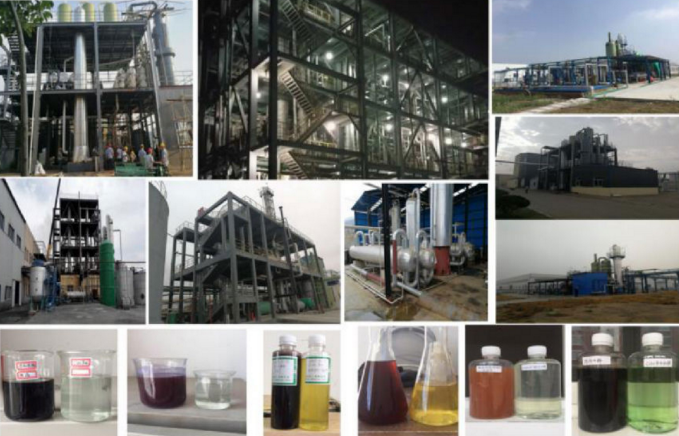In the realm of wastewater treatment, innovation continues to drive the evolution of efficient and sustainable methods. One such method that has gained prominence is the utilization of air oxidation. This powerful technique capitalizes on the reactivity of oxygen in the presence of contaminants to facilitate the removal of pollutants from wastewater. In this comprehensive guide, we will explain the basic konwledge of air oxidation and explore the multifaceted applications of air oxidation in wastewater treatment, shedding light on its mechanisms, advantages, and potential for transforming the landscape of water purification.
Understanding the Basics of Air Oxidation
Air oxidation, also known as aerobic oxidation or aeration, revolves around the principle of utilizing oxygen to promote the oxidation of pollutants present in wastewater. By introducing oxygen into the wastewater, the process initiates a chemical reaction where the contaminants are oxidized, effectively breaking them down into less harmful components.
Mechanisms at Play: How Air Oxidation Works
The heart of air oxidation lies in its ability to enhance the natural degradation of pollutants. As oxygen is introduced into the wastewater, it serves as an electron acceptor, facilitating the oxidation of organic and inorganic substances. Microorganisms, particularly aerobic bacteria, play a pivotal role in this process. These microorganisms utilize the available oxygen to metabolize and break down pollutants, converting them into carbon dioxide, water, and other benign byproducts.
Applications Across Wastewater Treatment Processes
The versatility of air oxidation finds its applications in various wastewater treatment processes, each tailored to address specific types of contaminants and treatment objectives.
1. Activated Sludge Process
The activated sludge process, a cornerstone of modern wastewater treatment, relies heavily on air oxidation. Here, oxygen is supplied to the wastewater to promote the growth of aerobic microorganisms within the activated sludge. These microorganisms actively consume organic matter and pollutants, effectively clarifying the water and reducing its pollutant load.
2. Biological Aerated Filters
Biological Aerated Filters (BAFs) harness air oxidation in a structured filtration system. Wastewater is passed through a bed of porous media, where aerobic microorganisms colonize. As the wastewater flows through the media, oxygen is continuously supplied, facilitating the biological degradation of contaminants, resulting in treated effluent.

3.Oxidation Ditches
Oxidation ditches are circular or oval basins where wastewater is subjected to aeration and mixing. The controlled introduction of air not only ensures the proliferation of aerobic bacteria but also creates an environment conducive to the breakdown of pollutants. Oxidation ditches are particularly effective in treating both organic and nutrient-based pollutants.
Advantages of Air Oxidation in Wastewater Treatment
The adoption of air oxidation offers a plethora of advantages that contribute to its growing prominence in the wastewater treatment landscape.
1. Efficient Pollutant Removal
Air oxidation stands out for its efficiency in removing a wide range of contaminants, including organic compounds, ammonia, and other pollutants. The synergistic action of oxygen and microorganisms accelerates the degradation process, resulting in effective pollutant removal.
2. Reduced Sludge Production
Compared to anaerobic treatment methods, air oxidation generates less sludge. The aerobic microorganisms involved in the process tend to produce less residual solids, simplifying the sludge management process.
3. Enhanced Water Quality
The application of air oxidation contributes to improved water quality by reducing the concentration of pollutants and organic matter. This is particularly crucial when treating wastewater destined for discharge into natural water bodies or reuse.
4. Flexibility and Adaptability
Air oxidation's adaptability makes it suitable for a diverse range of wastewater types, allowing for customization based on specific treatment goals and contaminants present.
5. Minimal Chemical Residue
Unlike some traditional water treatment methods that leave behind chemical residues, AOPs result in fewer residual chemicals. This means that the water treated through AOPs is less likely to have secondary contamination issues.
Unlocking the Potential: Air Oxidation for a Sustainable Future
As societies continue to grapple with mounting water pollution challenges, innovative solutions like air oxidation emerge as beacons of hope. The ability to harness the power of oxygen to catalyze the breakdown of contaminants offers a sustainable pathway towards cleaner water resources. From traditional activated sludge processes to advanced techniques like BAFs and oxidation ditches, the applications of air oxidation are poised to transform wastewater treatment into a more efficient, eco-friendly, and impactful endeavor.
Don't miss the opportunity to revolutionize the air oxidation process. Contact Sanli Fengxiang Technology Co., Ltd. today and let their cutting-edge solutions take your operations to new heights. Embrace the future of cleaner, more efficient air oxygenation with the experts shaping it. Your success and sustainability are just a phone call or email away!
If you want to read more information about wastewater treatment by air oxidation, just visit --> The Insider's Views: [https://www.slchemtech.com/guestbook/]














